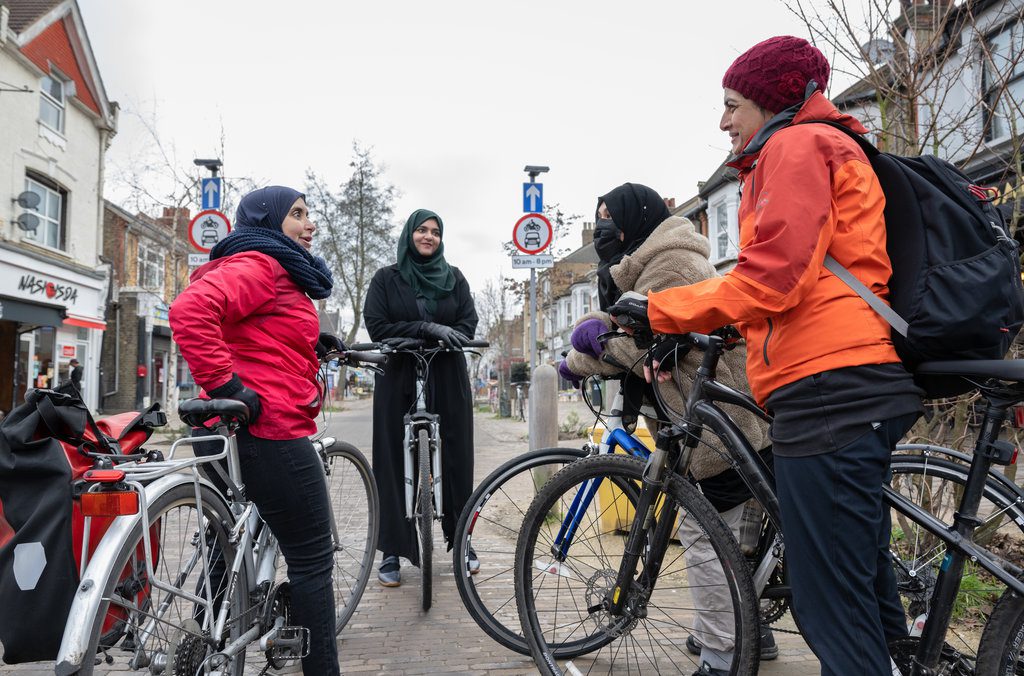Transport for London (TfL) has put safer cycling first and foremost in recent months, with the launch of a major new plan which sets out its commitment to further boost cycling numbers across the capital and ensure that people cycling become more representative of London’s diverse communities, as well as the announcement that it will be making its scheme on the A10 Bishopsgate permanent to help more people walk, cycle and use public transport communities.
The safer cycling plan will play a vital role in TfL’s continued efforts to make cycling a fundamental part of a greener, more progressive, modern city where everyone who wants to cycle can do so. The past two decades have seen huge growth in cycling in the capital, with a 155% increase in the number of daily cycle journeys since 2000.
Meanwhile, TfL and London boroughs have more than tripled the size of the London-wide strategic cycle network, from 90 km in 2016 to more than 340km in 2023, meaning that more than one in five Londoners now live near the Cycleway network.
The new Cycling Action Plan sets two major new targets which will help TfL and the boroughs build on recent successes, including:
■ Growing the number of daily cycle journeys to 1.6 million by 2030, up by a third from 1.2 million in 2022
■ Ensuring that 40% of Londoners live within 400 metres of the Cycleway network by 2030, up from the current level of 22% in 2022
The plan outlines why it is essential to broaden the appeal of cycling to a more diverse range of Londoners to ensure cycling levels continue to increase at pace and that all Londoners benefit from the health and economic benefits of cycling. TfL’s research shows that people from under-represented groups are open to taking up cycling. The plan outlines ambitious evidence-led measures to support these groups by addressing the barriers they face.
This includes ambitious targets for installing 42,000 secure residential cycle parking spaces by 2030, funding cycle training for more than 40,000 children and 20,000 adults this year and supporting more community-led interventions. TfL will also be exploring the possibility of, subject to funding, adding concessionary fares to the capital’s record-breaking Santander Cycles hire scheme to support the most disadvantaged Londoners.
Christina Calderato, TfL’s Director of Transport Strategy and Policy, said:
“Cycling plays a vital role in London’s transport network as we work to tackle road danger, as well as the threats posed by toxic air, the climate emergency and traffic congestion. We’ve made significant progress with cycling in recent years and we recognise that we need to go even further. This plan sets out significant new targets to ensure that cycling is a realistic choice for all Londoners.
We’ll continue to work closely with boroughs across the capital, alongside other partners, to make sure that we deliver on cycling for the benefit of everyone.
TfL has also announced it will be making its scheme on the A10 Bishopsgate permanent to help more people walk, cycle and use public transport, amid data suggesting that the scheme has led to faster bus journey times and thousands of safer cycle journeys each day.
In August 2020, TfL introduced a series of temporary changes along the road, in response to the pandemic, which were designed to make it safer and easier for people to walk, cycle and use public transport. The changes implemented included new restrictions on vehicles using the road on weekdays between 7am and 7pm to ensure that there was enough room for people to cycle on the road safely. Wider footways were also constructed along the corridor to ensure social distancing and a number of banned turns were introduced along the road.
TfL data suggests that the changes have played a vital role in supporting sustainable travel along the corridor, showing that the performance of buses on the Bishopsgate corridor has significantly improved since the changes were introduced, with bus journey times on the corridor two minutes per km faster northbound and one and a half minutes per km faster southbound. TfL data also demonstrates that very high numbers of people are using the Bishopsgate scheme to cycle, with monitoring so far showing an average of 7,500 people cycling on Bishopsgate per day since the changes were introduced, which is up from around 5,700 in 2019.
Provisional safety data also shows a reduction in overall collisions. Enabling more people to walk, cycle and use public transport is essential to a healthier and more sustainable city for all Londoners and TfL remains committed to its Vision Zero goal of eliminating death and serious injury on the transport network.
Last year, TfL launched a public consultation into the future of the scheme on the A10 Bishopsgate and if it should be made permanent and received more than 2,150 responses.
The decision to make the changes permanent will be followed by short-term upgrades to improve the streetscape, as well as further safety and public realm improvements in future years.
Helen Cansick, TfL’s Head of Healthy Streets Investment, said:
“We’re determined to ensure that people can walk and cycle safely across the capital and our data suggests that the changes we’ve made along Bishopsgate have played an important role in promoting healthy and sustainable ways of travelling in London. As a result of our bold changes here, it has become much safer for vulnerable road users, and bus journey times have reduced.”
Visit the Transport for London website at www.tfl.gov.uk

